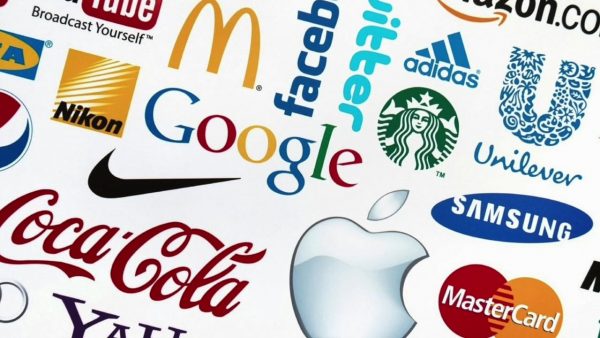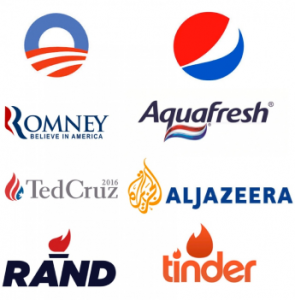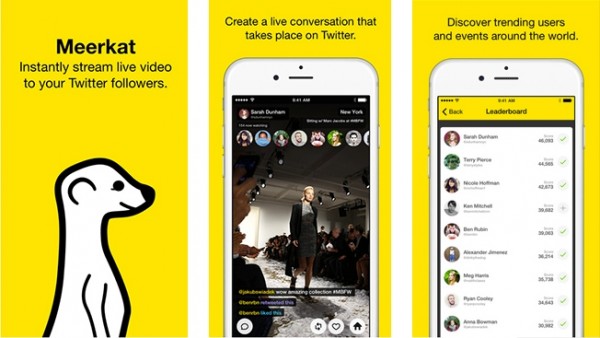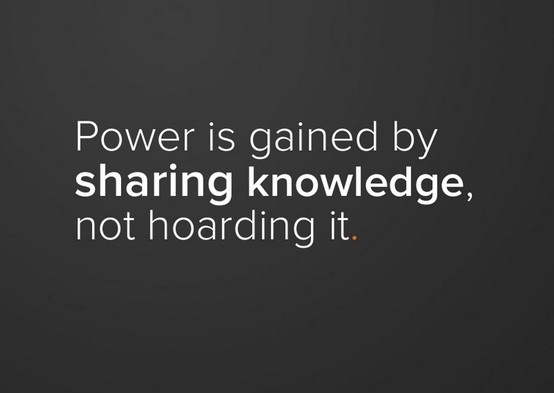At its core, public relations are about storytelling and now more than ever brands need to have a powerful and compelling story to engage and mobilize their audiences.
The trouble is, storytelling has its limitations. In today’s saturated communications marketplace, where information is digested in smaller sizes and competing against more channels, the ability for a story to engage and retain an audience is becoming increasingly difficult. Furthermore, technology has expanded the ability of audiences to digest information, so brands must find a more meaningful means to deliver a coherent and credible message.
Moving beyond storytelling
Brands today must move beyond segmented campaigns and episodic storytelling and develop a narrative, an central thematic that is the basis of the brand’s identity and strategy. A foundational idea that encompasses and forms all areas of a brand’s engagement across its myriad of channels and stakeholders, be it employees; consumers, traditional media, social influencers, policy makers, etc. A company’s narrative should tell everyone what it stands for and offers an idea for those stakeholders to connect with and align behind.
Today, public relations, corporate relations, publicists and marketers are all competing to engage the same audiences through more integrated means – paid, earned, social and owned – meaning that messaging needs to be not only engaging but also consistent across the various streams, and most important of all, in real time.
Brands must lead conversations
Digital and social media platforms have changed the way brands engage with their audiences. Communication no longer flows in a single direction; audiences are now feeding back to companies on a constant basis. Brands must now lead “conversations”, interacting with their audiences in real time, which has quantifiable impact on their reputation.

Proactively driving engagement is now an absolute. While engaging with audiences across these various channels, brands need to utilize a coherent narrative, one that provides clarity and consistency of that engagement. The ability to communicate a compelling, inclusive and consistent narrative has the power to inspire, energize and mobilize an audience in ways our industry never thought possible.
How to develop a strong narrative
- Have a real understanding of the brand’s purpose and its values. Consumers today are more value driven than ever before. How a company is trying to achieve its objective, is as important as what it is trying to achieve. Ensure your narrative seeks to explain what the brand stands for and what is it is seeking to achieve.
- The narrative must be relatable and easy to explain. To maintain the attention of audiences, a narrative cannot be bogged down in jargon. A strong narrative is based on fact and is not only persuasive but also easily repeatable.
- Be inclusive and insightful. Narratives need to evoke an emotional connection and invite participation. It presents an idea for an audience to believe in, support, and ultimately recommend.
In our hyper-completive, over-saturated communications environment, being able to portray a potent and authentic narrative has the power to genuinely connect with an audience, inspire them to action, and lead them on a journey.
Tags: brand engagement, branding, business, marketing, Media relations vancouver, Public relations, Vancouver PR, Vancouver social media
Social media is still a relatively new phenomenon and the features are constantly being updated. PR professionals should consider how these changes impact or enhance their campaigns.
Below is a round-up of recent ‘need to know’ social media news this fall.
Dislike is the new thing
Facebook announced that soon a ‘dislike’ button will launch. Mark Zuckerberg explained that the new function would allow people to show ‘empathy’.
Brands need to pay attention to this; consumers will be able to voice their dislike for campaigns with a simple click of a button. Brands will make headlines for the wrong reasons when a campaign backfires as a result of this function.
Purchasing power
Twitter is making its ‘Buy’ button available to everyone in the US, as a result of a partnership with Stripe. This is great news for online retailers and enhances the importance of Twitter as a customer service channel – the more followers you have, the more likely customers are to make an instant purchase.
The value for this activity will be measurable based on sales directly through the Twitter platform – this will make it easier getting buy-in for social media at the executive level.
Retailers should enhance their social media plans to develop an engaged, relevant and sizeable following on Twitter as a result.
Numbers count
Pinterest announced in September that it had hit the 100 million users’ milestone. Out of this number, around 70 per cent are considered to be ‘actively’ engaged. The company also confirmed that while Pinterest users are predominantly women, the gender gap is closing month by month.
The benefit of Pinterest for brands is people are often browsing the site for items they potentially want to buy; it is often treated like a shop window. Advertisers can proactively pay for promotional pins now and this feature will become more valuable as the number of users grow.
Pose for a portrait
Instagram is moving away from simply showcasing square images; now users can choose to post portrait or landscape photos. This is generally better for brands. Images won’t need to be compromised to fit the square frames, and will be better for accommodating specific brand guidelines.
At Peak Communicators we monitor for these social media updates daily and consider how they can be used in client campaigns. We’ll continue to share relevant updates via this blog and also our social media channels (Facebook, Twitter, Linkedin).
Tags: Vancouver PR, Vancouver public relations, Vancouver social media
On Sunday April 12th, 2015, Hillary Clinton finally announced her much �anticipated run for presidency. When this news broke, the conversation �did not seem to focus on her qualifications, her platform, or even the �possibility that she may become America’s first female president; the �chatter was all about her campaign logo.
Within hours, social media was ablaze with critiques and comparisons to her block-letter “H” with a �red arrow running through it: some saying it resembled hospital signage, while others stated it �looked like something created by a 10 year old on MS Paint.
To be fair, Hillary is not the only political pundit to be on the receiving end of this type of �“crowdsmashing”, a term coined by Paul Ford to describe how social media has allowed people to �rally in a mob-like fashion to pick apart something they are not pleased with.

Crowdsmashing can be even more vicious if a well-known entity decides to undergo a rebrand. �People do not like change, and social platforms allow them to voice that displeasure, and find out �who else shares in their unhappiness.
This whole debacle surrounding logos and social media got me thinking about two facets of �communications I deal with on a daily basis:
1. Our world is becoming increasingly visual
Tumblr, Pinterest and Instagram currently lead the way in terms of fastest growing social media �platforms. What else do these three platforms have in common? They’re light on text and heavy �on imagery. In a digital era where our attention is so fleeting, we are placing increasing value on �things that are visually appealing to us. If we don’t like what we see almost immediately, we are �clicking/swiping/scrolling on to something better.
This phenomenon can also be extended to something like your company website. You may be the �best and most innovative at what you do, but if your website appears dated, unorganized and �difficultto use, it will be seen as a reflection of your business and users will start looking �elsewhere. Remember that 55% of users spend as little as 15 seconds on your homepage, so your �website has to catch their eye in order for them to stick around and potentially use your service.
In terms of media, TV places an extremely high value on great visuals. If your pitch to TV outlets �doesn’t offer imagery that will entice their viewers to continue watching, don’t expect to have �it picked up.
2. Everyone’s a critic
When a client story is told on any outlet type, the content is typically shared across social �channels, or is open to comments online. You could be telling the happiest or most factually �correct story possible, but there’s likely someone out there who wants to point out something �negative, or who claims to know even more than you (I’m sure all the people critiquing Hillary’s �“H” have years of graphic design and branding experience).
One negative, anonymous commenter on a story likely isn’t something to sweat about; however �it is important to continuously monitor the chatter surrounding your brand online. Whether �you’re running a social media campaign or a news story about your company just broke, following �along with audience sentiment is vital in informing you of what aspects are and are not working, �and whether or not you need to get out in front of a crisis before it starts to escalate.
When it comes to day-to-day social media responsibilities, if your company is receiving questions �or complaints, it is important to respond to them quickly and professionally even if you find them �trivial or know them to be incorrect. Ignoring these public comments will make it appear as though� you have something to hide, or are neglectful of customer needs.
So whether you’re trying to become the President of the United States or just trying to generate �business, understanding what is visually appealing to your audience and monitoring the �conversation surrounding your brand online is important.
Tags: Government relations Vancouver, Vancouver PR, Vancouver social media
The public relations and social media landscapes are constantly changing and, sometimes, it’s hard to keep up. One way to help stay up-to-date with new techniques and tools is by learning from bright public relations and social media professionals around you. I recently attended a YVR PR Roundtable – a casual meet up group for public relations (PR) pros in Vancouver – and the crew introduced some interesting PR and social media tools that are worth sharing. Although there are many more uses for each tool listed below, I wanted to give an example of how each tool could be used in a PR campaign.
Social Mention
o What it does: aggregates user generated content from across the web into a single stream of information.
o Useful for: when a crisis happens it’s great for tracking sentiment, and getting a good snapshot of what’s being said.
Muck Rack
o What it does: Muck Rack’s mission is to make journalists, PR pros and marketers more successful by connecting them through its platform.
o Useful for: finding and pitching the right journalist.
Meerkat & Periscope
o What they do: live-stream video through Twitter. Meerkat was all anyone could talk about at SXSW this year!
o What’s the difference: although they are very similar apps, Meerkat was first on the scene, while Periscope is owned by Twitter.
o Useful for: raising the profiles of thought-leaders and CEO’s. For example, Hootsuite recently used Periscope to live-stream an AMA (Ask Me Anything Session) with Ryan Homes.

Coverage Book
o What it does: grabs coverage, crunches all the data and designs an impactful showcase that best presents a client’s brand.
o Useful for: curating earned media hits, and handing a beautiful, client-ready report.
Product Hunt
o What it does: curates the best new products on one website; the most popular products are positioned at the top of the site.
o Useful for: gaining momentum for product launches.

These are just a few of the many PR and social media tools on the market today that help communications pros garner top tier results for their company and clients. To keep up with the latest PR and social media trends, connect with YVR PR on Facebook and Twitter.
Tags: Vancouver media relations, Vancouver PR, Vancouver public relations, Vancouver social media




